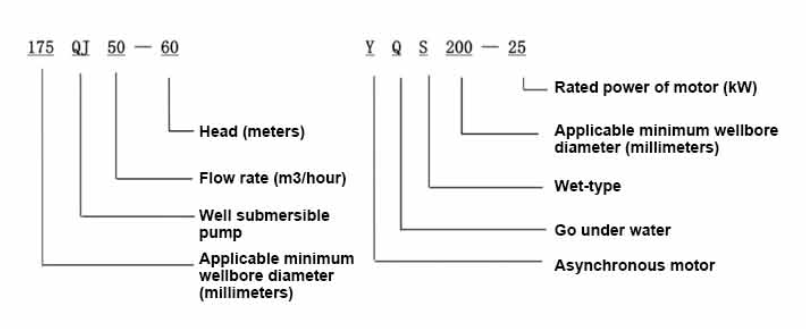Nov . 16, 2024 01:01 Back to list
submersible deep well pump installation
Installation of Submersible Deep Well Pumps A Comprehensive Guide
Submersible deep well pumps are essential for extracting water from deep underground sources. These pumps are commonly used in agricultural, municipal, and industrial applications due to their efficiency and reliability. Installing a submersible deep well pump requires careful planning, appropriate equipment, and adherence to safety protocols. This article will guide you through the installation process, ensuring that your pump operates effectively and efficiently.
Understanding the Submersible Deep Well Pump
A submersible deep well pump is designed to be submerged in the water it is pumping. It consists of a motor, a pump stage, and a pump bowl and is typically made from corrosion-resistant materials to withstand harsh environmental conditions. These pumps are designed to lift water from depths that can exceed 400 feet. The installation process, while complex, can be managed with the right tools and knowledge.
Pre-Installation Considerations
Before you begin the installation, it's crucial to conduct a site assessment. Determine the depth of the well, the water quality, and the required flow rate. It’s also important to check local regulations concerning well construction and pump installation to ensure compliance. Additionally, it is advisable to consult with a qualified professional or a pump installer, especially if you are inexperienced.
Tools and Materials Needed
For the installation, you will need
- A submersible deep well pump - Electrical cable and connectors - A pump control box - A discharge head - Piping (PVC, usually) - A well cap or seal - A torque wrench - A hoist or crane (for large pumps) - Safety gear (gloves, goggles, etc
.)Step-by-Step Installation Process
submersible deep well pump installation

1. Prepare the Well Start by cleaning the well to remove any debris or sediments. If necessary, you can conduct a well rehabilitation process to ensure the water quality is adequate for pumping.
2. Assemble the Pump According to the manufacturer’s guidelines, assemble the pump components. Attach the pump to the motor and ensure all connections are secure.
3. Prepare Electrical Connections Run an electrical cable from the power source to the pump site. Ensure the power supply is off during this process to avoid electrical hazards. Connect the cable to the pump motor in a watertight manner to prevent any moisture from entering the connections.
4. Lower the Pump into the Well Using a hoist or crane, slowly lower the pump into the well. Be cautious to avoid any jerking movements, as this can damage the pump. The pump should be positioned at the desired depth, ensuring it is fully submerged in water.
5. Install the Discharge Head Once the pump is in place, secure the discharge head at the well's surface. This piece allows the water to be directed to the distribution system and provides a space for electrical connections to the pump.
6. Connect Piping Attach the appropriate piping to the discharge head. Ensure that all piping is adequately sealed to prevent leaks. It’s important to carefully consider the diameter and material of the piping to ensure compatibility with the water being pumped.
7. Testing the System After everything is in place, turn on the power supply and run the pump. Check for any leaks in the plumbing and listen for unusual noises from the pump. Monitor the flow rate and ensure it meets your requirements.
8. Finishing Touches Install a well cap to protect the well from debris and contaminants. Ensure all electrical components are secured and weatherproofed.
Conclusion
Installing a submersible deep well pump can seem daunting, but with the right approach, it becomes a manageable task. Following these steps carefully will not only ensure a proper installation but will also contribute to the pump’s longevity and efficiency. Regular maintenance, adherence to regulations, and monitoring performance will help you get the best out of your submersible deep well pump for years to come. Always consider engaging a professional if you're unsure about any step in the process for safety and compliance.
-
Submersible Water Pump: The Efficient 'Power Pioneer' of the Underwater World
NewsJul.01,2025
-
Submersible Pond Pump: The Hidden Guardian of Water Landscape Ecology
NewsJul.01,2025
-
Stainless Well Pump: A Reliable and Durable Pumping Main Force
NewsJul.01,2025
-
Stainless Steel Submersible Pump: An Efficient and Versatile Tool for Underwater Operations
NewsJul.01,2025
-
Deep Well Submersible Pump: An Efficient 'Sucker' of Groundwater Sources
NewsJul.01,2025
-
Deep Water Well Pump: An Efficient 'Sucker' of Groundwater Sources
NewsJul.01,2025
-
 Submersible Water Pump: The Efficient 'Power Pioneer' of the Underwater WorldIn the field of hydraulic equipment, the Submersible Water Pump has become the core equipment for underwater operations and water resource transportation due to its unique design and excellent performance.Detail
Submersible Water Pump: The Efficient 'Power Pioneer' of the Underwater WorldIn the field of hydraulic equipment, the Submersible Water Pump has become the core equipment for underwater operations and water resource transportation due to its unique design and excellent performance.Detail -
 Submersible Pond Pump: The Hidden Guardian of Water Landscape EcologyIn courtyard landscapes, ecological ponds, and even small-scale water conservancy projects, there is a silent yet indispensable equipment - the Submersible Pond Pump.Detail
Submersible Pond Pump: The Hidden Guardian of Water Landscape EcologyIn courtyard landscapes, ecological ponds, and even small-scale water conservancy projects, there is a silent yet indispensable equipment - the Submersible Pond Pump.Detail -
 Stainless Well Pump: A Reliable and Durable Pumping Main ForceIn the field of water resource transportation, Stainless Well Pump has become the core equipment for various pumping scenarios with its excellent performance and reliable quality.Detail
Stainless Well Pump: A Reliable and Durable Pumping Main ForceIn the field of water resource transportation, Stainless Well Pump has become the core equipment for various pumping scenarios with its excellent performance and reliable quality.Detail
